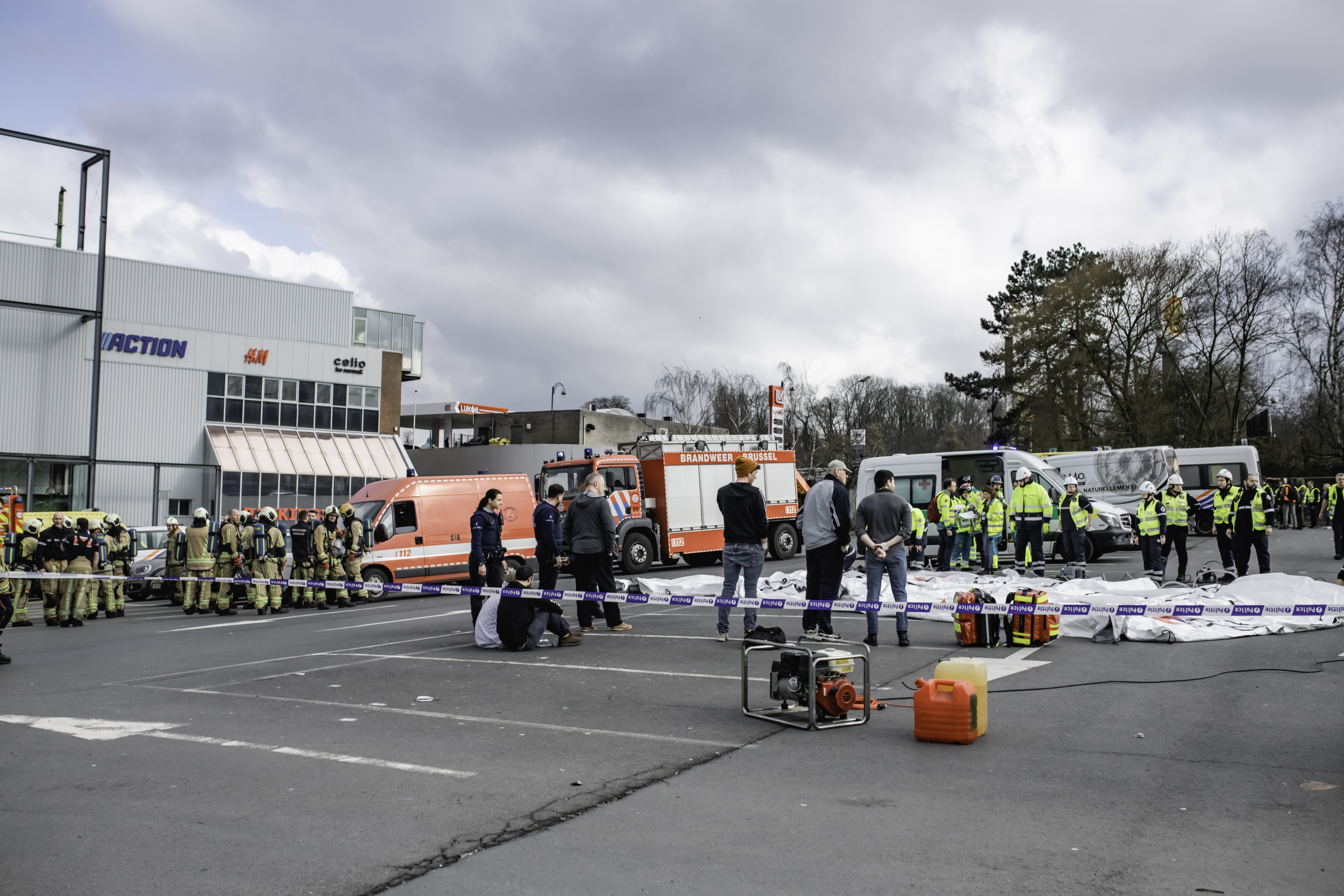The first step in the emergency planning and crisis management cycle is to identify the risks. The mayor at municipal level, the governor at provincial level and the Minister of the Interior at national level, all address the risks that may arise on their territory. For the Brussels Agglomeration, this is the High Official, who has the same powers as a provincial governor in terms of emergency planning and crisis management.
There are a number of specific risks in the Brussels-Capital Region. These are characterised by the reality of Brussels as a metropolis. The Brussels-Capital Region is largely urbanised with a high population density.
The BCR has a population of over 1,2 million, or more than 10% of Belgium's total population, over a surface area of 162 km², or just 0.5% of the entire Belgian territory. Average population density is therefore almost 20 times higher than the Belgian average.
Furthermore, during the day, the population of Brussels increases significantly, as the Region is an employment hub: an increase of around +25%, as more than 400,000 commuters come to work in the BCR.
Brussels has a vast network of tunnels. At 2,600 metres long, the Annie Cordy tunnel to the north is the longest tunnel in Belgium, and is a major strategic traffic artery, with more than 60,000 vehicles passing through every day.
The North-South connection is Belgium's busiest rail connection, and also covers the country's three busiest stations: Bruxelles-Midi, Bruxelles-Central and Bruxelles-Nord each handle around 60,000 passengers every weekday.
Risk information
Under the responsibility of the High Official and in collaboration with numerous experts from regional administrations and security and intervention services, a risk analysis on the Brussels-Capital Region was carried out in 2022. Risk allocation is based on four categories, in line with the Belgian risk assessment:
- Natural risks: this category includes, for example, floods, heat waves or droughts.
- Technological risks: these include transport-related risks (with or without hazardous substances), an incident at a Seveso plant or industrial pollution.
- Health risks: the category of health risks includes epidemics, but also, for example, the risk of peak pollution incidents.
- Man-made risks: this class includes risks caused by human action and with malicious intent, such as attacks on "soft targets", critical entities or public bodies, and cybercrime.
Specific risks
Find more information on certain specific risks in the Brussels-Capital Region.
What can you do?
Learn more about how you can prepare for an emergency:
112 AND 101
You can call the emergency centres 24 hours a day, 7 days a week for urgent assistance. Call 112 for an ambulance or the fire brigade in Belgium; call 101 for urgent police assistance in Belgium.
Mobile app 112 BE
The most important advantage of the 112 BE app is that you don't have to remember the emergency numbers and therefore don't have to worry about forgetting them if you're in distress. You just tap the ambulance, firefighter or police icon depending on what kind of help you need.
Learn more1722 - need the fire department, but there's no potential danger to life?
In the event of a storm or flood, if you need the fire department but it's not life-threatening, you can call 1722. The Federal Public Service Interior activates the telephone number 1722 in the event of storms or floods, for fire brigade interventions where there is no danger to life.
Learn more




